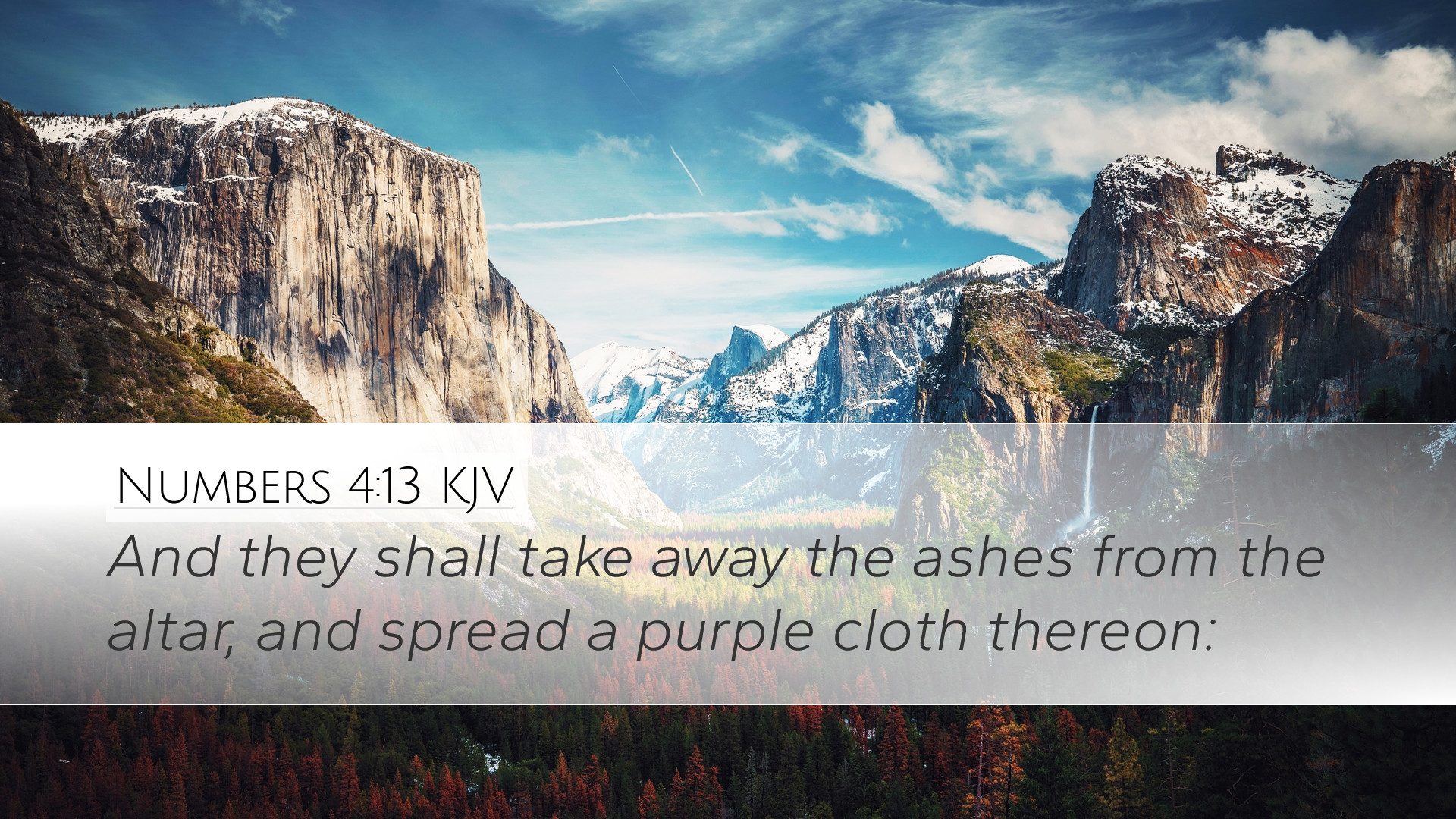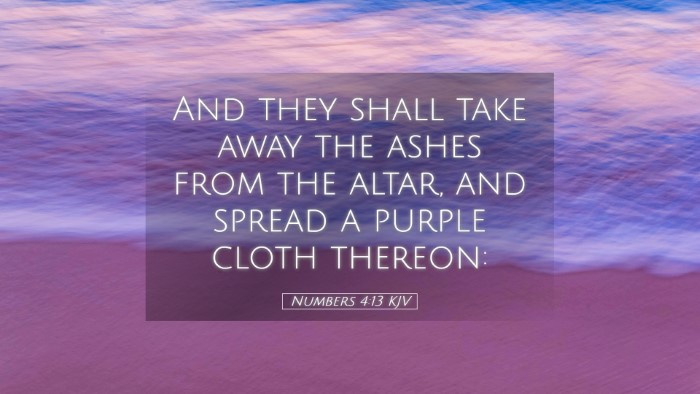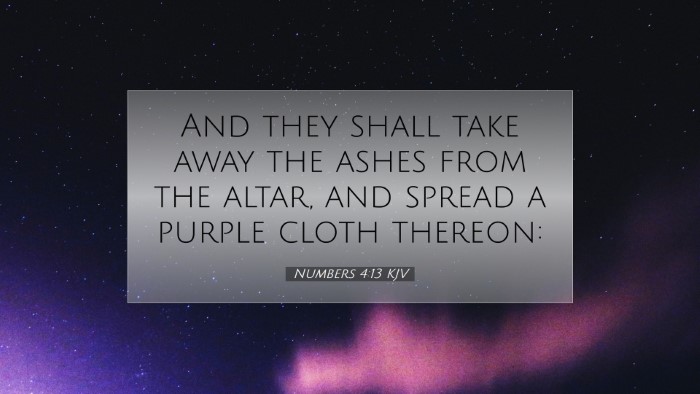Commentary on Numbers 4:13
Numbers 4:13 states: "And they shall take away the ashes from the altar, and spread a purple cloth thereon:" This verse, while seemingly straightforward, has profound implications for the priests' duties and the overall symbolism within the Old Testament sacrificial system.
Introduction to the Context
The Book of Numbers is primarily concerned with the organization of the Israelite community during their wilderness journey. Chapter 4 specifically details the tasks assigned to the Kohathites, one of the Levitical families charged with handling the sacred items of the Tabernacle. This particular verse falls within the instructions regarding the preparation and maintenance of the Tabernacle services.
Insights from Matthew Henry
Matthew Henry, in his commentary, emphasizes the significance of the physical actions involved in the worship of God, including handling the ashes from the altar. He suggests that these mundane tasks, such as removing ashes, carry spiritual weight, representing the need for continual purification in the worship activities of the Israelites.
- Symbol of Sacrifice: Henry notes that the ashes represent the remnants of the sacrifices offered. They conform to the idea that worship costs something and that offerings have been made on behalf of the people.
- The Purple Cloth: The act of covering the altar with a purple cloth signifies the honor and reverence due to God. Purple, often associated with royalty, highlights the sacredness of God’s service.
Albert Barnes' Interpretation
Albert Barnes provides a critical examination of the rituals associated with the altar and demonstrates how these actions reflect the proper attitude towards God’s holiness. He elaborates on the practical aspects of the priests’ roles in this context.
- Removal of Ashes: Barnes explains that the ashes must be removed so that the altar is prepared for new offerings. This act symbolizes both the conclusion of previous sacrifices and the readiness for new ones, highlighting God's merciful provision and ongoing relationship with His people.
- Visual Symbolism: The spreading of the purple cloth over the altar wasn’t merely aesthetic; it served to remind the people of the dignity of God’s worship and the need to approach Him with seriousness and sanctity.
Adam Clarke's Analysis
Adam Clarke delves into the practicalities and the reverence associated with the priestly functions. His insights provide a broader understanding of the sacrificial system in the context of Israel’s covenantal relationship with God.
- Purification Practices: Clarke emphasizes that removing the burnt offerings' ashes represents the ongoing purification of the worship environment, which must be maintained to ensure that God’s presence remains with the people.
- Restoration and Readiness: He notes that continually removing the ashes also signifies a need for constant readiness to present new offerings, an important aspect of worship that indicates ongoing reliance on God’s grace.
Theological Implications
This verse, though often overlooked, invites extensive theological reflection:
- Permanent Commitment: The consistent removal of ashes speaks to the ongoing need for sanctity in the worship practice. Worship should not become routine or complacent; it must remain a fresh and meaningful act before God.
- Foreshadowing Christ: The ashes symbolize the sacrifices made, pointing ultimately to Christ as the ultimate sacrifice. The preparation of the altar, in this light, can be seen as a type of Christ's sacrificial death and resurrection, indicating the new covenant which surpasses the old requirements.
- Call to Holiness: Pastors and leaders can discern the call to maintain purity in the worship setting, ensuring that the community approaches God with a heart rightly aligned with His will.
Conclusion
Numbers 4:13 may appear as a minor detail in the grand narrative of Scripture, yet it encapsulates essential principles of worship, the importance of preparation, and the continuous need for God’s people to approach Him with reverence and holiness. The insights provided by public domain commentaries deepen our understanding and application of this verse in contemporary faith practice.


